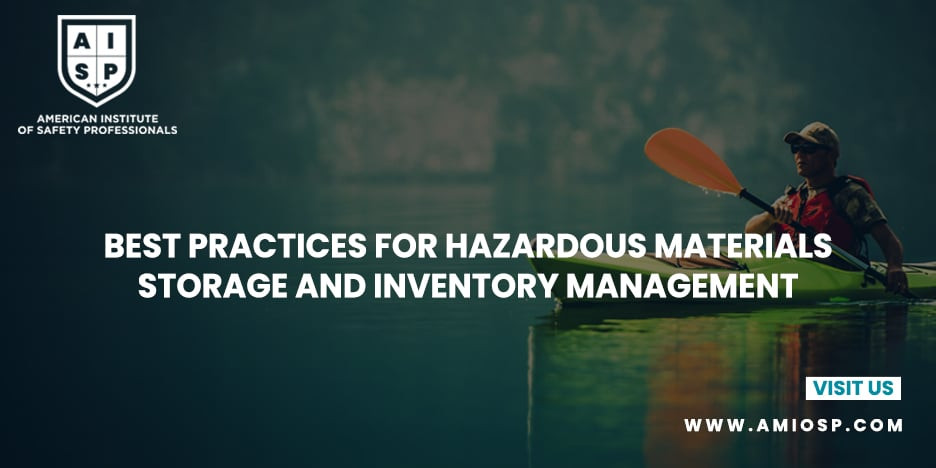Hazardous materials are an integral part of various
industries, including manufacturing, healthcare, and construction. While these
materials play a crucial role in driving progress and innovation, they also
pose significant risks if not handled and stored properly. Effective hazardous
materials storage and inventory management is essential to ensure the safety of
employees, protect the environment, and comply with regulatory requirements. In
this blog post, we will discuss the best practices for storing and managing
hazardous materials to minimize risks and maintain a safe working environment.
1. Understanding Hazardous Materials:
Before diving into the best practices for storage and inventory
management, it is important to have a clear understanding of hazardous
materials. These materials can include flammable substances, corrosive
chemicals, toxic substances, and reactive agents. Identifying and categorizing
hazardous materials based on their properties and potential risks is the first
step in managing them effectively.
2. Regulatory Compliance:
Compliance with relevant regulations and standards is
crucial when it comes to hazardous materials storage and inventory management.
Familiarize yourself with the regulations specific to your industry and
location, such as the Occupational Safety and Health Administration (OSHA)
standards in the United States. Ensure that your storage and inventory
practices align with these regulations and stay up to date with any changes or
updates.
3. Proper Storage Facilities:
Investing in appropriate storage facilities is essential for
the safe storage of hazardous materials. Consider the following factors when
designing or selecting storage areas:
a) Segregation: Different hazardous materials may react with
each other if stored together. Segregate incompatible materials to prevent
accidents and ensure safe storage.
b) Ventilation: Adequate ventilation is crucial to prevent
the buildup of toxic fumes or flammable vapors. Install ventilation systems
that meet the requirements for hazardous materials storage.
c) Fire Suppression: Implement fire suppression systems,
such as fire extinguishers and sprinkler systems, to minimize the risk of fire
incidents.
d) Secondary Containment: Use secondary containment systems,
such as spill containment pallets or bunded areas, to prevent leaks and spills
from spreading and causing environmental damage.
4. Proper Labeling and Signage:
Accurate labeling and signage are essential for hazard
communication and to ensure that employees can identify and handle hazardous
materials safely. Use standardized labeling systems, such as the Globally
Harmonized System (GHS), to clearly indicate the nature of the hazards
associated with each material. Additionally, use prominent signage to mark
storage areas and provide instructions for handling and emergency response.
5. Inventory Management:
Efficient inventory management is crucial to prevent
overstocking or running out of critical hazardous materials. Implement a robust
inventory management system that tracks the quantity, location, and expiration
dates of all hazardous materials. Regularly conduct audits to reconcile
inventory records with physical stock and promptly dispose of expired or unusable
materials.
6. Employee Training:
Proper training of employees is vital to ensure the safe
handling, storage, and disposal of hazardous materials. Conduct comprehensive
training programs that cover the identification of hazardous materials, proper
storage procedures, emergency response protocols, and the proper use of
personal protective equipment (PPE). Regularly refresh employees' knowledge
through ongoing training sessions and safety drills.
7. Emergency Preparedness:
Despite all precautions, emergencies can still occur.
Establish comprehensive emergency response plans to address potential
incidents, such as spills, leaks, or fires. Include procedures for evacuations,
containment, and communication during emergencies. Conduct regular drills to
familiarize employees with these protocols and ensure their effectiveness.
8. Regular Inspections and Maintenance:
Regular inspections and maintenance are essential to
identify potential hazards, equipment malfunctions, or storage deficiencies.
Create a schedule for routine inspections of storage areas, equipment, and
safety devices. Promptly address any issues identified during inspections to
maintain a safe working environment.
Conclusion:
Implementing best practices for hazardous materials storage
and inventory management is crucial for ensuring workplace safety,
environmental protection, and regulatory compliance. By understanding hazardous
materials, complying with regulations, investing in proper storage facilities,
maintaining accurate inventory records, training employees, and being prepared
for emergencies, organizations can minimize risks and create a safe working
environment. Remember, effective hazardous materials management is an ongoing
process that requires continuous monitoring and improvement to adapt to
changing regulations and best practices.











0 comments
No Comments